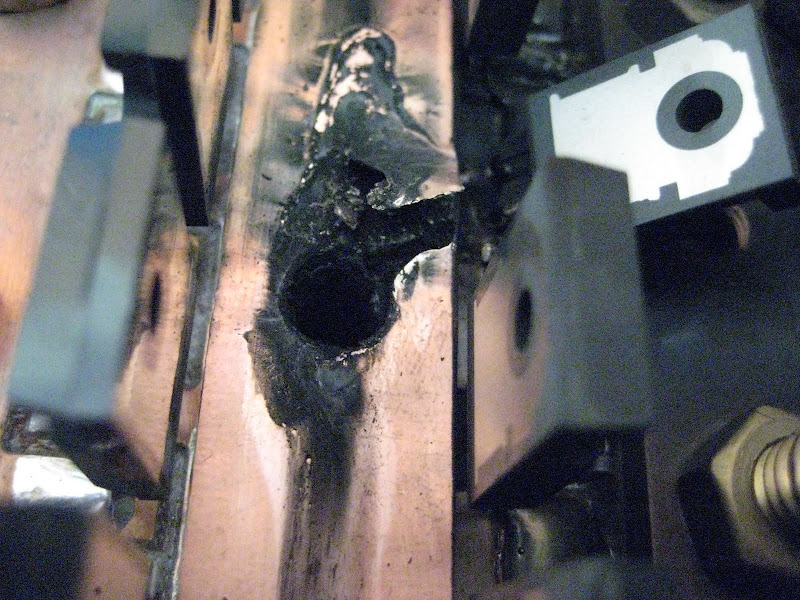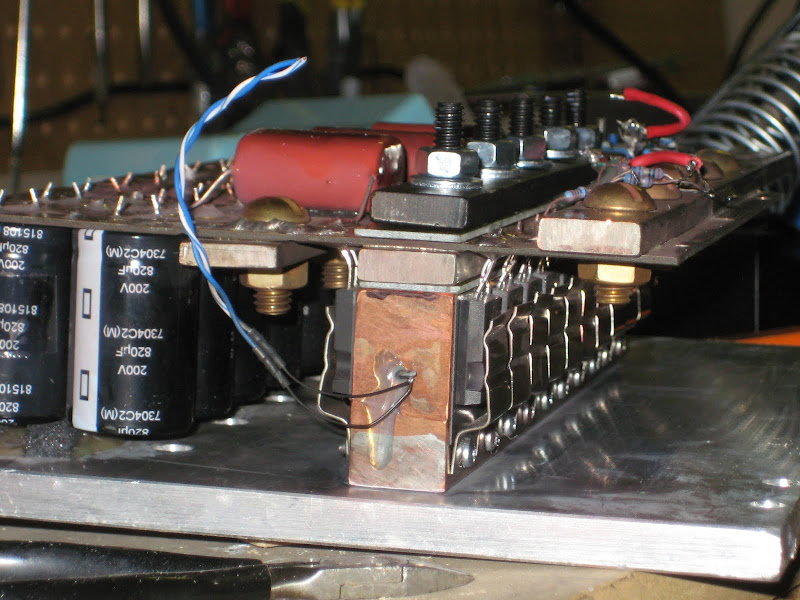The good news is that the controller still works. The bad news is that a couple weeks ago it went 'poof'!
Here's the story:
I drive to work, everything is fine. I get in to leave for lunch and notice the voltage meter reads 0V instead of pack voltage (it's after the precharge resistor, so it really measures voltage across the caps, and they weren't charging). Unfortunately, I thought the meter was acting weird, so I closed pressed the pedal which closed the main contactor. The car instantly lurched a few feet until the contactor opened and the dreaded smoke and dead electronics smell emanated from under the hood.
So, had it towed and took the controller apart. The whole album is here:
Picasa Web Albums - Joseph - controller fa...
It looked pretty bad:

One bolt was blown apart:

Which one of these things is not like the other?

I tried to clean the bolt as best as I could...

One of the legs of one diode near the bolt was blown apart.

There's copper blasted onto the nearby bus bar and a trough was blasted into the solder.

Two of the nearby caps were blasted too. They turned out to be internally shorted.

This is what the bottom of the heat spreader looked like. A small channel was cut from the bore of the bolt hole to the outer edge.

The insulating PCB strip that touches the heat spreader mirrors the damage.

There was definitely something going on here between the B- layer and the insulation strip. The two layers were stuck together 360 degrees and pulling the insulating PCB off stretched it apart and made it baloon like that.

So, the theory is that the heat shrink that insulated the bolt from the B- and M- layers got compromised. Paul originally put it together and said that some of the bolts were a little tight going in. Maybe after a year and 6000 miles of vibration and thermal cycling, the threads of the bolt worked through the heatshring. Eventually, both the B- layer and the M- bus bar contacted the bolt and 144v started an arc that blew through some of the PCB copper and the bolt. The resulting plasma shot out between the cracks, bored the hole in the heat spreader and took out the diode leg and the caps.
The fix:
Fran suggested an easy check to test the mosfets. They resistance from Gate to Source should ready infinite. Turns out the one mosfet opposite of the blown diode read a few kOhms, so that was replaced along with the diode and caps.
I found some perfect nylon flanged bushings at Ace Hardware. They're 1/4" ID and 1/2" long and pretty much fit right into the holes already drilled through the heat spreader and PCBs. Some were tight. But, they should provide good insulation of the bolt and various hot things it passes through.

The flange diameter is 1/2", so the holes in the one insulation strip needed to be larger so the fit around the flange. Both the flange and the PCB thickness is 1/16".

Everything back together!

Given the amount of damage, 1 mosfet, 1 diode, 2 caps, and $3 worth of nylon bushings from Ace is not too bad! Paul was great helping with getting parts. If anyone has their controller apart, this modifcation would be pretty easy to do. It would take quite a bit of work getting the controller apart.
I've only taken a couple of trips with the fixed controller, but so far so good!